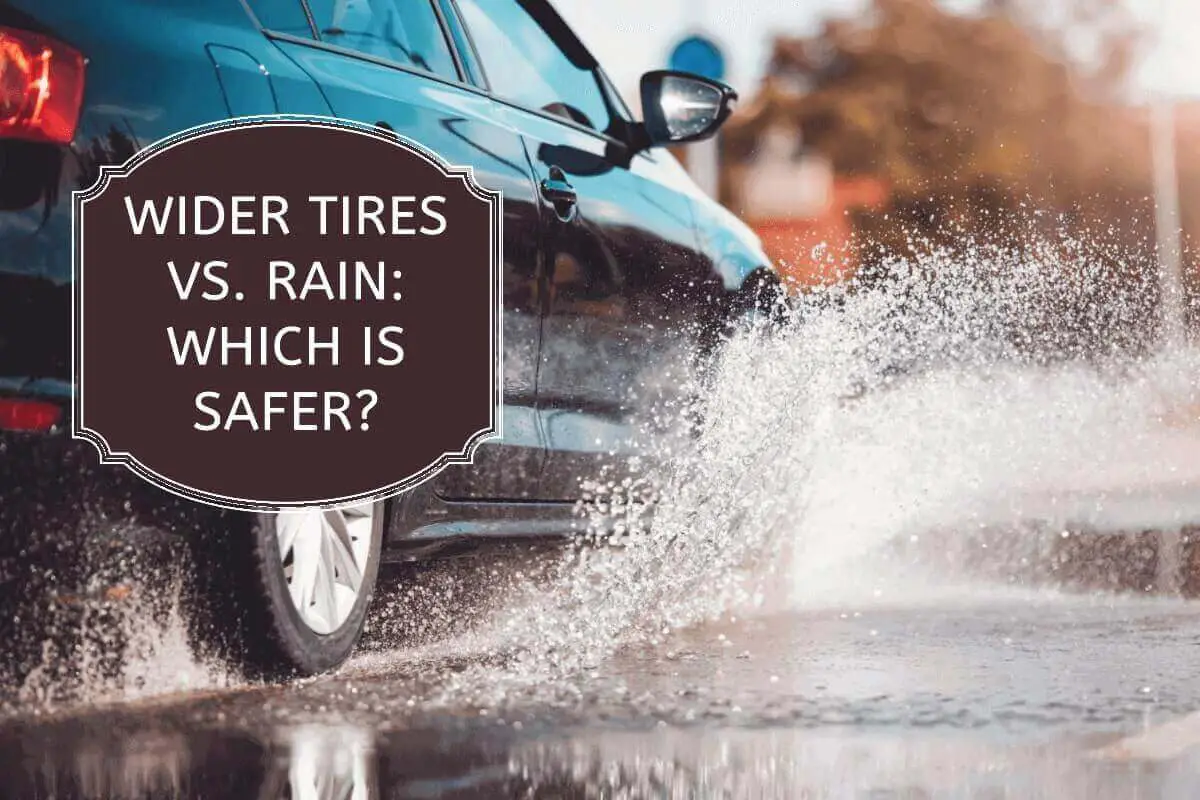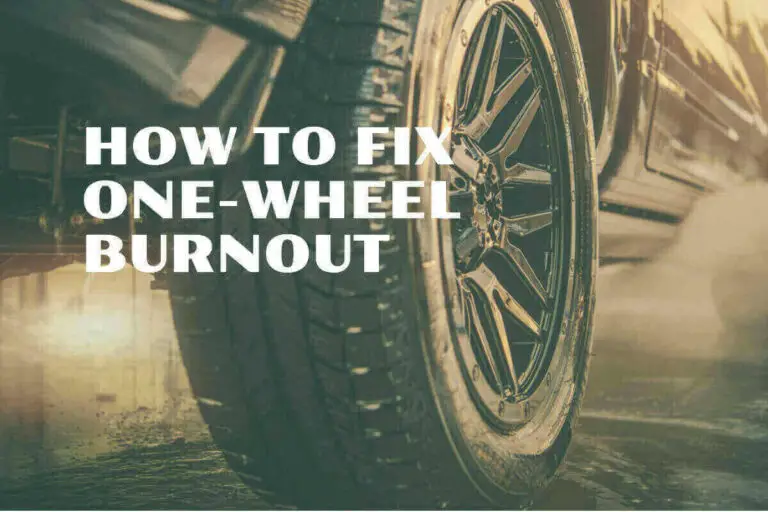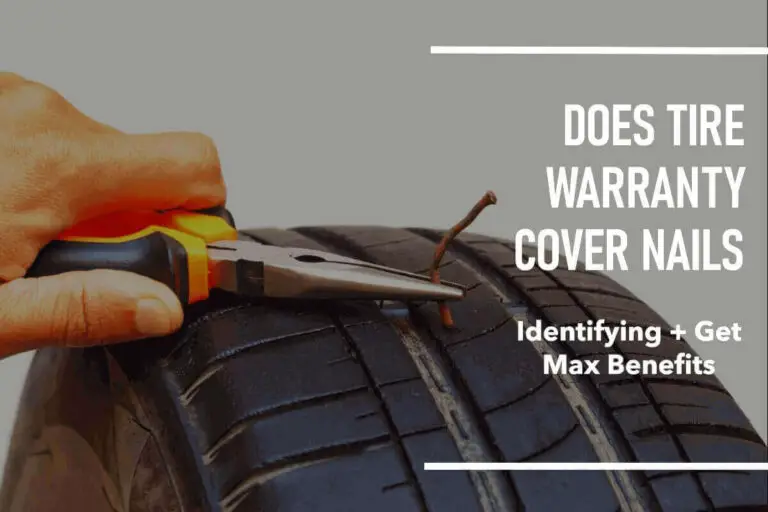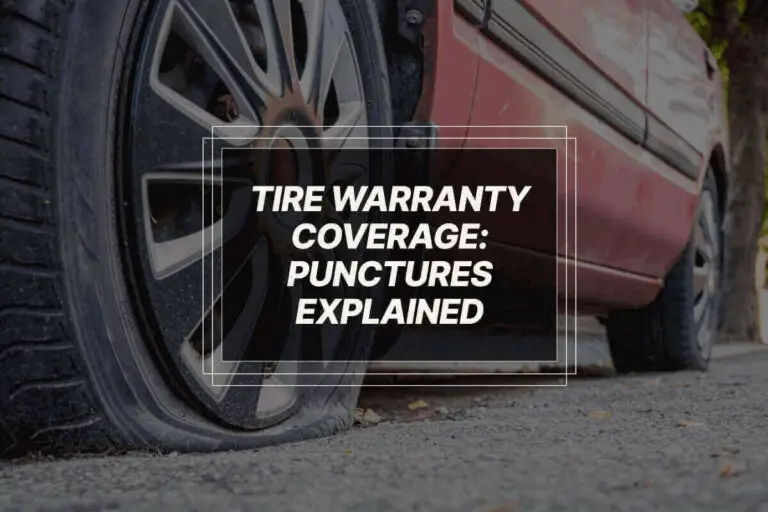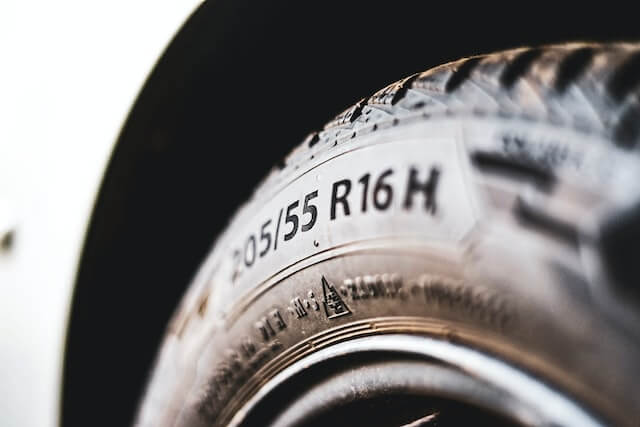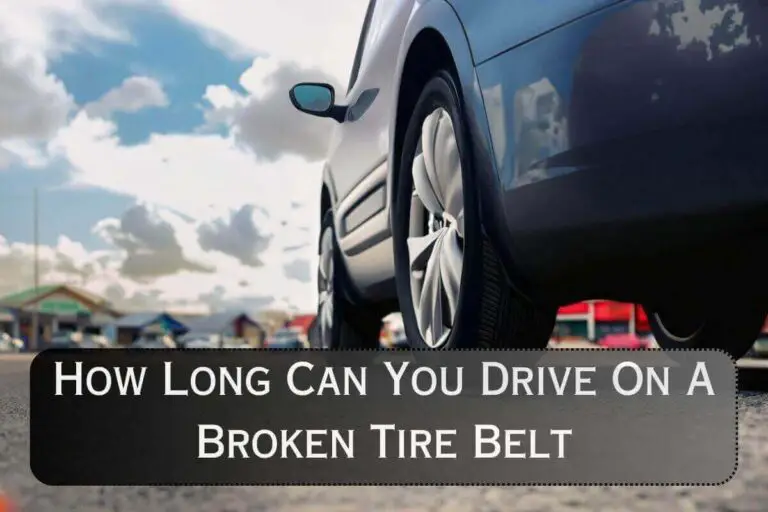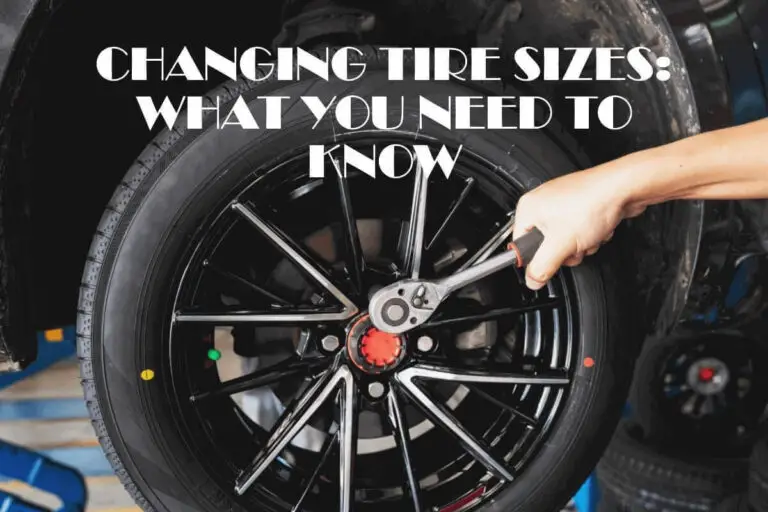When it comes to driving in rainy conditions, safety is a top priority for every driver. One of the crucial factors affecting a vehicle’s performance in wet weather is the tires. Among the various tire options available, there is an ongoing debate about are wider tires are better in rain.
In this beginner’s guide, we will explain the advantages and disadvantages of wider tires in wet conditions and help you choose the right tires for your vehicle.
Are Wider Tires Better in Rain
Yes, wider tires can be better in the rain, offering improved aquaplaning resistance, enhanced stability, and better braking performance. However, other factors like tread pattern, tire compound, and tire pressure also play a significant role in wet weather performance. The correct tire width depends on various factors, including weather conditions, driving style, and vehicle type.
Opting for wider tires can provide several advantages for drivers frequently encountering rainy conditions. So, if you want to get the science behind this question, Are wider tires better in rain? Let’s delve into the science behind why wider tires can be better in rainy conditions.
Wider tires increased contact patch with the road. The contact patch refers to the portion of the tire that comes into contact with the pavement. Wider tires have a larger surface area, which allows for better grip and traction on wet roads. As water accumulates on the road surface, it creates a thin film between the tires and the pavement, reducing friction.
Advantages of Wider Tires in Rain
1. Improved Aquaplaning Resistance
Aquaplaning occurs when a layer of water builds up between the tire and the road, leading to loss of traction. Wider tires have a larger contact patch with the road surface, which can help disperse water more effectively and reduce the risk of aquaplaning.
2. Enhanced Stability
Wider tires offer better stability and handling in wet conditions. The larger footprint provides improved grip on the road, allowing the driver to maintain control over the vehicle.
3. Better Braking Performance
Wider tires can provide shorter braking distances on wet roads due to their increased contact area. It is especially crucial in emergencies where every inch counts.
Disadvantages of Wider Tires in Rain
1. Risk of Hydroplaning
While wider tires can help resist aquaplaning, they are not immune to it. If the water depth on the road is too significant, even wider tires may not prevent hydroplaning entirely.
2. Reduced Fuel Efficiency
Wider tires generally have more rolling resistance, which can lead to decreased fuel efficiency. It might not be directly related to rainy conditions, but it’s essential to consider overall tire performance.
Choosing the Right Tire Width
Choosing the correct tire width for your vehicle depends on various factors, including weather conditions, driving style, and the type of vehicle you own.
1. Weather Conditions
If you live in an area with frequent rain or encounter wet roads often, opting for slightly wider tires could be beneficial.
2. Driving Style
Consider your driving habits. If you tend to drive aggressively or take corners at high speeds, wider tires can offer better stability and grip.
3. Type of Vehicle
Different vehicles have specific tire width recommendations based on weight distribution and suspension design. Check your vehicle’s owner’s manual or consult a professional for the optimal tire width.
The above factors should be considered when determining the optimal tire width for your vehicle.
Other Factors Affecting Rain Performance
While the width is critical, other elements impact a tire’s performance in rainy conditions.
Tread Pattern
The tread pattern is vital in channelling water away from the tire’s contact patch. Look for tires with deep grooves and channels designed for excellent wet traction.
Tire Compound
The tire’s rubber compound can influence its grip on wet surfaces. Some tires are formulated with specific compounds that perform better in the rain.
Tire Pressure
Proper tire pressure is essential for optimal performance in all weather conditions, including rain. Underinflated or overinflated tires can negatively affect handling and grip.
The above factors play a crucial role in determining the overall performance of tires in wet conditions. Now you got the answer Are wider tires better in rain or wet conditions?
Maintenance Tips for Driving in Rain
Proper maintenance is crucial for safe driving in rainy weather, regardless of your tire width.
1. Regular Tire Inspections
Check your tires regularly for signs of wear and tear, such as uneven tread wear or damage.
2. Tire Rotation
Rotate your tires as the manufacturer recommends to ensure even wear and extend tire life.
3. Tire Pressure Check
Maintain the recommended tire pressure to enhance performance and fuel efficiency.
4. Avoid Hydroplaning
Drive at a safe speed during heavy rain and avoid sudden manoeuvres to reduce the risk of hydroplaning.
Conclusion
The width of your tires impacts your vehicle’s performance in rainy conditions. Are wider tires better in rain? Yes, wider tires can offer improved aquaplaning resistance, enhanced stability, and better braking performance. However, they are not immune to hydroplaning and may result in reduced fuel efficiency.
When choosing the correct tire width for your vehicle, consider your location’s weather conditions, driving style, and the manufacturer’s recommendations. Remember that other factors like tread pattern, tire compound, and tire pressure are essential in wet weather performance.
Investing in high-quality tires and maintaining them will ensure your safety and driving pleasure in all weather conditions. Stay informed, be cautious, and enjoy your rides safely, rain or shine!
Frequently Asked Questions (FAQs)
Are wider tires more prone to hydroplaning?
Wider tires can be more prone to hydroplaning at high speeds, especially if the tread depth is low. The wider contact patch of the tire means more surface area comes into contact with the water on the road, increasing the risk of water getting trapped between the tire and the road surface. It can reduce traction and control, potentially causing the vehicle to skid or lose stability on wet roads.
Do wider tires ride smoother?
Wider tires may offer a slightly smoother ride due to the larger contact area with the road, which can help absorb minor road imperfections and vibrations. However, ride comfort is influenced by various factors, including tire construction, sidewall height, and the vehicle’s suspension system.
Do wider tires increase acceleration?
Wider tires may offer a slight improvement in acceleration due to the increased grip on the road surface. However, the effect on acceleration is generally insignificant, and other factors, such as engine power and transmission, play a more significant role in determining acceleration performance.
Do wider tires make a car more stable?
Yes, wider tires can improve a car’s stability, especially during cornering. The larger contact patch provides better lateral grip, reducing the chances of the vehicle slipping or sliding during turns and ultimately enhancing overall stability and control.
Do wider tires prevent hydroplaning?
While they don’t entirely prevent hydroplaning, wider tires help reduce the risk. The larger contact patch of wider tires allows for better water dispersion, which minimises hydroplaning chances. However, it’s essential to maintain adequate tread depth and proper tire inflation to ensure optimal hydroplaning resistance.
Do wider tires affect suspension?
Wider tires can have some impact on the suspension system. The increased width may alter the vehicle’s handling characteristics and can put additional stress on specific suspension components. It’s essential to ensure that the tires are within the recommended size range for the vehicle to maintain optimal suspension performance and safety.

